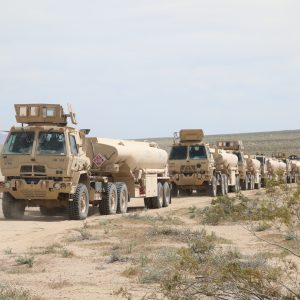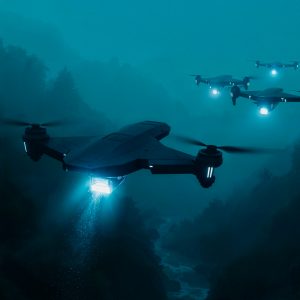
The Pentagon now aims to Americanize drone warfare with clear doctrine, resilient digital C2, and scale production. Recent tests at Camp Atterbury showed how these parts can work as one. As a result, the shift from ad-hoc trials to sustained operations has begun. See the source report [1].
Key Facts
Event: T-REX gathered 26+ vendors to prove fast, integrated drone missions across sensing, autonomy, and networking [1].
Digital C2: AWS and GDIT linked edge video, telemetry, and orders over “dirty internet” using secure routing and SDN [1] [4].
Doctrine: USMC, Army Rangers, 5th SFG, and Navy SEALs are aligning a joint drone doctrine for operators at scale [1] [3].
Industry: DoD pushes low-cost drone buys and faster cycles to seed mass production and rapid variant spins [2].
From demo to doctrine
T-REX prioritized function over spectacle. Nevertheless, it revealed the path to fieldable mass. The goal is simple: keep Ukraine’s rapid iteration, yet add U.S. standardization and training.
The Marine Corps is formalizing tactics, techniques, and procedures for FPV and multi-UAS use. Meanwhile, joint partners are syncing playbooks and roles. Therefore, units will learn from a stable syllabus rather than start from scratch in combat [1] [6].
Digital C2 that survives jamming
Electronic warfare is now routine. Thus, command-and-control must work even when links are weak. At T-REX, AWS and GDIT fused feeds and orders from many vendors. In short, they moved data through untrusted networks while holding mission tempo [4].
GDIT’s DOGMA uses secure vector routing and software-defined networking. Consequently, edge nodes can push or pull data despite interference. Moreover, separate channels let video, telemetry, and tasking flow without clogging other traffic [1] [4].
Autonomy with a human on the loop
“A passive sensor network can let one robot detect and sort targets. Full autonomous firing is not policy yet.”
Briefing remarks reported by Defense One [1]
Today, autonomy supports the operator. For example, off-board sensors raise confidence in target ID while humans retain control. Over time, autonomy will handle more counter-drone moves where latency is critical. However, legal and safety gates will shape that progress.
From prototypes to mass customization
DoD’s memo on low-cost drones pushes buying power down. As a result, vendors can plan for repeat orders and stable tooling. Instead of one rigid line, the future looks modular and flexible [2].
Events like T-REX close the gap between labs and line units. Moreover, smaller firms can test airframes and edge-AI ideas against common interfaces. Therefore, updates become faster: test, get feedback, patch software, and deploy again [1].
Training for Ukraine-like tempo—without improvisation
The Marine Corps Attack Drone Team (MCADT) is building a repeatable FPV training pipeline. It includes standard drills, safety limits, and mission design patterns. Crucially, the material is written for broad use, not only for elite units [3].
For NATO and industry, alignment matters. Interoperable control links, telemetry formats, and deconfliction rules reduce friction. Consequently, coalition swarms can form faster. For background on swarm behavior, see our analysis [5].
Bottom line
The United States is not copying Ukraine. Instead, it is institutionalizing what worked, then scaling it. With doctrine, digital C2, and industry aligned, the Pentagon can Americanize drone warfare for sustained use at home and with allies.
Further Reading
Defense One on the Pentagon plan [1].
DoD memo on accelerating low-cost drones [2].
USMC message establishing MCADT [3].
AWS Public Sector on resilient edge-to-cloud with GDIT [4].
References
- Defense One — “The Pentagon plan to Americanize drone warfare”
- U.S. DoD — Pentagon to Increase Low-Cost Drone Production in U.S. (Jul 16, 2025)
- USMC — Establishment of the Marine Corps Attack Drone Team (MCADT)
- AWS Public Sector — Resilient edge-to-cloud (DOGMA with GDIT)
- Defence Agenda — Unleashing the Power of Swarm Technology
- Defense One — Marines’ attack drone team is defining UAV warfare
Source credit: Defense One / Patrick Tucker.







